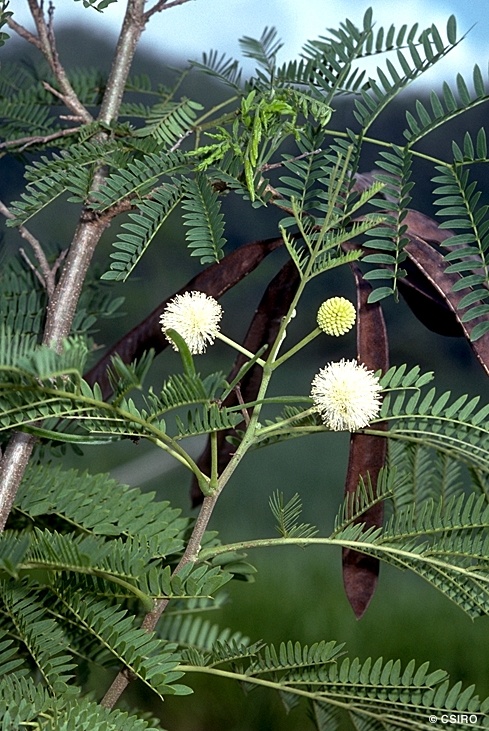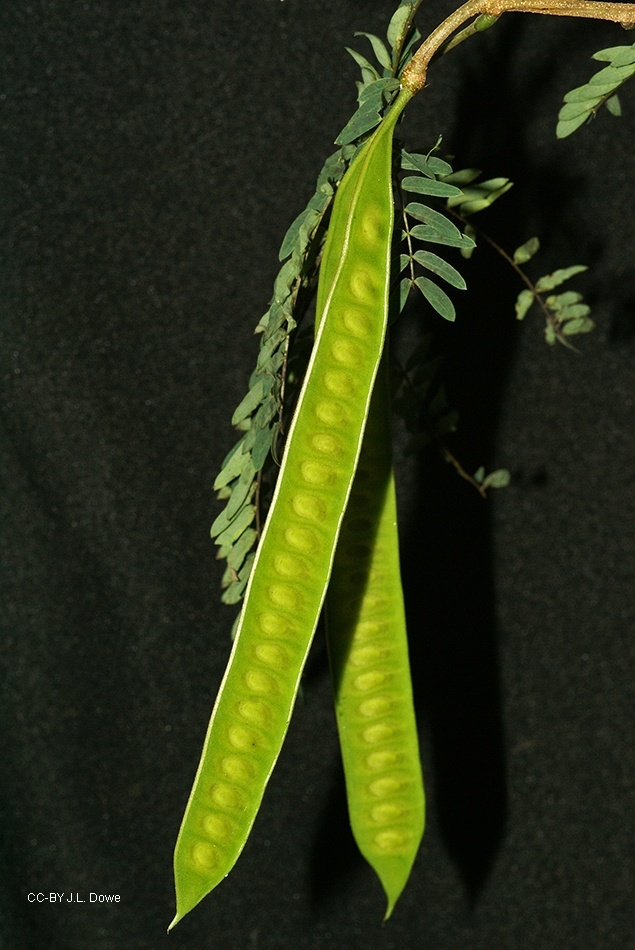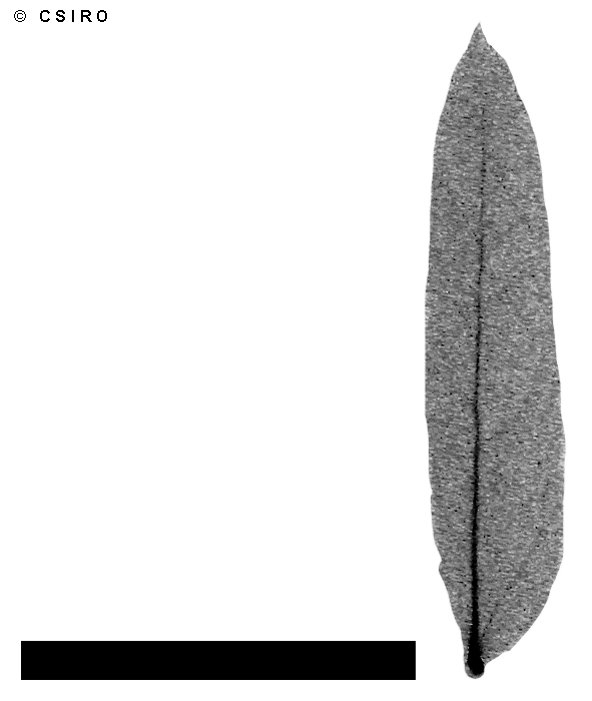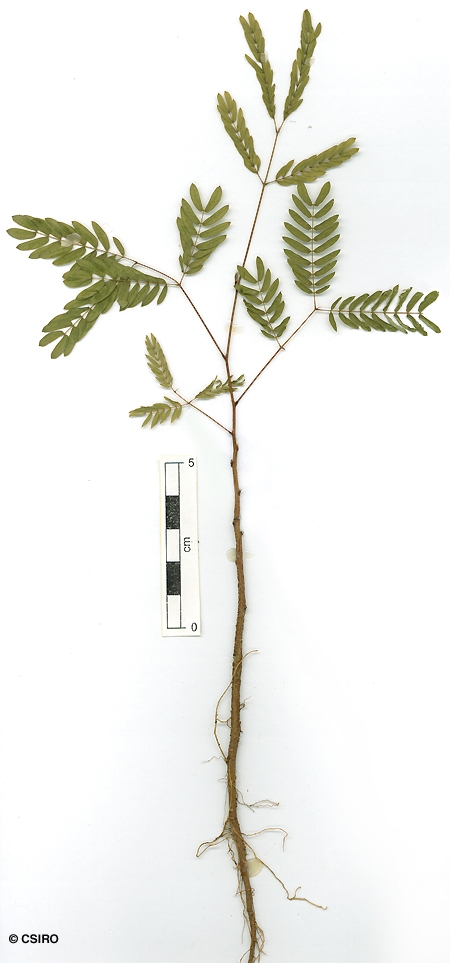Australian Tropical Rainforest Plants - Online edition
Leucaena leucocephala (Lam.) de Wit






Wit, H.C.D. de (1961) Taxon 10: 54.
Vi Vi; Ipil-ipil; Jumbie Bean; Koa Haole; Leadtree; Leucaena; Coffee Bush; Vaivai; White Popinac; Sneaky Tree
Grows into a small tree but often flowers and fruits as a shrub.
Leaflet blades about 9-15 x 2-5 mm, almost sessile or on a very short stalk, about 10-15 pairs on each secondary axis. A raised volcano-shaped gland usually visible on the upper surface of the primary compound leaf axis at the point of attachment of the basal pair of secondary axes. Stipules about 2 mm long, produced between the base of the compound leaf petiole and the twig.
Pods flat, about 11-14 x 1.5 cm, seeds transverse. Seeds about 6-8 mm long, about 8-14 per pod. Testa with an elongated horseshoe-shaped or spathulate mark (pleurogram) on each side. Funicles filiform, long and slender.
Cotyledons about 12-17 x 8-11 mm, shortly petiolate, apex rounded, base sagittate. Cotyledonary stipules very small, about 1 mm long. First leaf pinnate, second leaf bipinnate. At the tenth leaf stage: leaves bipinnate with 2-4 secondary axes, each ending in a hair-like process. Leaflets +/- sessile, about 5-13 x 1.5-4 mm, very unequal sided at the base. Stipules about 1-2 mm long. Seed germination time 4 to 5 days.
An introduced species originally from Central America, now naturalised in WA, NT, CYP, NEQ, CEQ and southwards as far as coastal central New South Wales. Altitudinal range in northern Australia from near sea level to 200 m. Grows in disturbed areas in open forest and rain forest. Also occurs in Asia, Malesia and the Pacific islands.
Food plant for the larval stages of the Common Grass Yellow Butterfly. Common & Waterhouse (1981).
Introduced into tropical Australia as a forage crop for cattle.
Root bark material of this species was active against some tumors. This species contains a toxic amino acid, mimosine which suppressed the formation of tumors in mice. Mimosine is toxic to animals, causing depilation, eye cataracts and reproduction problems. Collins et al. (1990).
When eaten in moderation this species is an excellent source of high quality protein. Toxic effects develop when animals, especially horses, have free access to it over a period of weeks particularly when other food is scarce or dry. Everist (1974).





